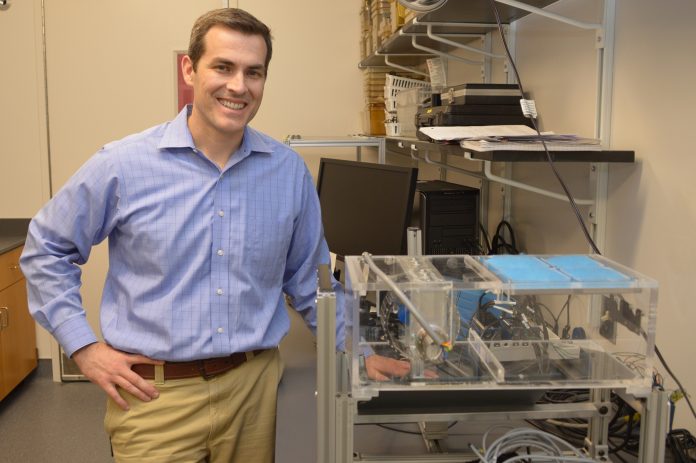Oklahoma Medical Research Foundation scientist Tim Griffin, Ph.D., has received a five-year, $1.76 million grant from the National Institutes of Health to study how aging combined with obesity contributes to osteoarthritis.
“We hope that this research can help us find new ways to prevent some of the excessive breakdown and damage that occurs in osteoarthritis,” said Griffin. “While joint problems might go along with aging, if we ask the right questions, we may find new opportunities for earlier intervention to help lessen suffering.”
Osteoarthritis, the most common form of arthritis, is a joint disorder that typically begins after the age of 40. Also known as degenerative joint disease, it’s marked by breakdown of cartilage and meniscus and abnormal growth of the underlying bone and joint lining.
According to the Centers for Disease Control, osteoarthritis affects more than 25 million Americans, most commonly in the knees, hips, hands and spine. The specific causes of the disease are unknown, but they are believed to be a result of both mechanical and molecular events in the affected joint.
These events, or stressors, can vary from outside forces like trauma or injury to genetic or hormonal factors, which can break down the cartilage over time. With the added stress and inflammation brought on by extra weight, strain on the joint can intensify and become more severe.
In the grant, Griffin looks at how aging combined with obesity affects the metabolism of cartilage at a molecular level and how it puts the cartilage at higher risk for osteoarthritis. In diseased cartilage collected from patients undergoing joint replacement surgery, Griffin observed that cartilage cells changed their basic metabolism.
Most cells rely on glucose, the sugars that serve as the body’s energy source, to fuel rebuilding of tissues. But in obese patients, Griffin found that the cells made a shift to using lipids, fats in the body, in response to stress. Glucose helps the body make energy faster and helps it repair tissues quicker than lipids do.
“We want to look at the mechanism that causes the shift from glucose to lipids,” said Griffin, who joined OMRF from Duke University in 2008.”We’re essentially working with mouse models fed a high-fat diet to study how aging and obesity affect the metabolism of cartilage.”
This work may eventually help to identify people who might be at risk for developing osteoarthritis, whether it occurs through aging or injury, Griffin said.
“A key question we hope to answer is, ‘What can we do to help prevent this excessive breakdown and damage in the joints?’ If we can identify the steps in that process, it has the potential to help us identify new osteoarthritis treatments based on those developed for other diseases related to altered lipid metabolism, like diabetes.”
Griffin’s grant, R01 AG049058-01, is funded through the National Institute of Aging, a part of the NIH.












